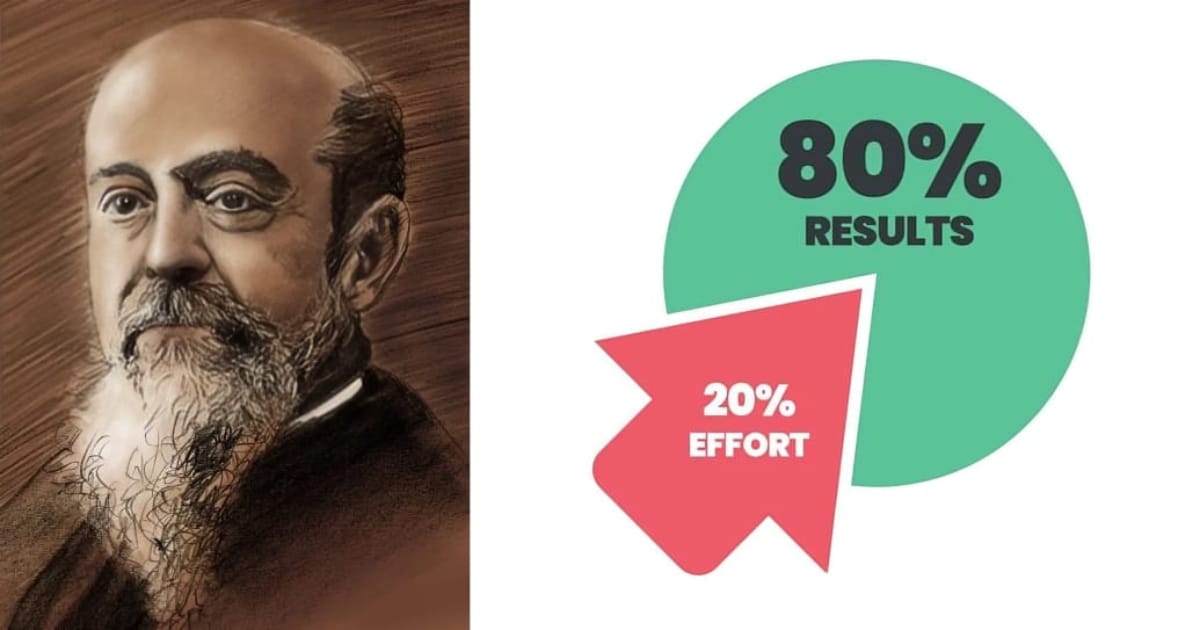How Applying 80/20 Rule will 10X Your Business

Efficiency equates to a competitive edge. The 80/20 rule, or Pareto Principle, states that 80% of results stem from 20% of causes. Originally observed in wealth distribution by Vilfredo Pareto, this principle translates across domains, including business management.
By applying the 80/20 rule, companies can pinpoint the 20% of efforts driving 80% of outcomes. This allows leaders to focus energy on high-impact activities, boosting productivity, profitability, and scalability. This article explores leveraging the 80/20 rule to optimize operations and drive transformative results.
Understanding the 80/20 Rule

The Concept
At its core, the 80/20 rule is about identifying an imbalance in effects relative to causes. In business terms, this means some of your efforts will inherently be more productive than others. For example, a small portion of your customer base typically generates the majority of your revenue, or a few of your products may dominate sales figures.

Historical Background
The rule was first observed by Pareto when he noticed that 20% of the pea plants in his garden generated 80% of the healthy pea pods. He then discovered that this ratio could be applied to wealth distribution in Italy, where roughly 20% of the population controlled approximately 80% of the land. This principle has been applied in economics, business, health care, software development, and more, demonstrating its wide relevance and utility.
Transition to Business Strategy
For businesses, the 80/20 rule is a vital tool for achieving more with less. It emphasizes that outputs are not always proportional to inputs. By identifying which 20% of your efforts contribute to 80% of your results, you can strategically focus your resources and energies on those areas that truly drive success and trim down or eliminate areas that offer low returns.
Identifying the 20%

Identifying the 20% of inputs that generate 80% of outputs is crucial for optimizing business processes and maximizing efficiency. This section explores various strategies businesses can use to pinpoint these critical inputs in key areas.
Sales
In sales, data analysis can reveal that a small percentage of clients contribute to the majority of revenue. To identify these clients, businesses can analyze sales data to track revenue per client and concentrate on the top-performing clients. Strategies might include:
- Developing more personalized relationships with these top clients.
- Tailoring products or services to meet their specific needs.
- Offering loyalty rewards or premium services to ensure their continued business.
Customer Service
Customer service can also benefit from the 80/20 rule by identifying the most common issues that lead to significant customer dissatisfaction. Focusing on resolving these issues can greatly improve customer satisfaction and retention. Techniques include:
- Analyzing customer feedback to identify frequent complaints.
- Prioritizing these issues in service training programs.
- Implementing more efficient systems or technologies to handle common concerns.
Product Development
In product development, the 80/20 rule helps businesses understand which products or features are most valued by customers. This can be achieved through:
- Customer usage data to see which features are most and least used.
- Feedback loops with customers to gather insights on product performance and necessity.
- Scaling back or discontinuing less popular products to focus resources on those that generate the most interest and revenue.
By focusing on these critical areas, businesses can not only increase efficiency but also enhance their overall market competitiveness.
Applying the 80/20 Rule to Maximize Efficiency

With the crucial 20% identified, the next step is to apply the 80/20 rule strategically to enhance business efficiency. This involves reallocation of resources, prioritization of efforts, and continuous monitoring.
Operational Efficiency
Streamlining operations by focusing on the most productive aspects can lead to significant cost savings and better resource allocation. Actions include:
- Delegating or outsourcing less critical operations.
- Investing in technology that automates routine tasks.
- Training staff to focus on high-impact activities.
Strategic Decision-Making
Applying the 80/20 rule in decision-making ensures that executives focus on decisions that provide the greatest impact. This can involve:
- Strategic investments in high-return areas.
- Cutting down on time spent on low-impact decisions.
- Using data-driven insights to back high-stakes decisions.
Continuous Monitoring and Adjustment
The dynamics of business mean that the 20% can shift over time. Regular reviews of business processes and outcomes are essential to ensure that the focus remains on the most impactful areas. This could include:
- Quarterly reviews of sales and customer data.
- Regular feedback sessions with customers and staff.
- Adjusting strategies in response to shifting market conditions or performance data.
Implementing these steps helps ensure that a business remains agile, with resources concentrated on areas that provide the most substantial returns.
Scaling and Growth with the 80/20 Rule

Scaling a business involves not just expanding its operations, but doing so smartly and sustainably. The 80/20 rule can guide strategic scaling by focusing on the most effective growth levers.
Leveraging High-Impact Customers
Identifying and nurturing high-impact customers can drive exponential growth. Strategies might include:
- Creating bespoke services or products tailored to the needs of these customers.
- Developing VIP customer programs that enhance loyalty and increase spending.
- Using data analytics to predict and meet their needs before they arise.
Expanding Successful Products
Focusing on your most successful products or services for scaling efforts can maximize return on investment. This could be implemented through:
- Increasing marketing efforts around successful products.
- Exploring new markets or demographics for these top performers.
- Innovating on these products to maintain and increase their market lead.
Automating for Efficiency
Automation plays a crucial role in scaling operations by ensuring that increased volume does not come at the cost of efficiency or quality. Key areas include:
- Automating customer service with AI chatbots to handle routine inquiries.
- Using CRM systems to manage customer interactions and enhance personalization.
- Implementing ERP systems to streamline back-end operations like inventory management and logistics.
Strategic Delegation
As businesses grow, it's crucial that leaders delegate effectively to focus on high-impact activities. This involves:
- Training and empowering middle management to handle operational decisions.
- Outsourcing non-core functions such as IT support, HR, and accounting.
- Creating strong reporting structures to ensure quality and accountability without micromanagement.
Challenges and Considerations

While the application of the 80/20 rule can significantly enhance business operations and growth, there are challenges and considerations that need addressing to avoid common pitfalls.
Over-Focus on the Short-Term
There is a risk that focusing too heavily on the 20% may neglect long-term planning or innovation. Balancing the short-term gains with long-term strategic planning is vital. This includes:
- Investing in research and development.
- Considering potential market changes that might alter what constitutes the 20%.
- Regular strategic reviews to reassess and realign business goals.
Misidentification of the 20%
Incorrectly identifying which aspects of the business fall into the 20% can lead to misallocated resources. Ensuring accurate data collection and analysis is key to mitigating this risk. Actions include:
- Using advanced data analytics and industry benchmarks.
- Engaging with external consultants for unbiased assessments.
- Continuously educating leadership on market trends and internal performance metrics.
Resistance to Change
Implementing the 80/20 rule often requires significant changes in how a business operates, which can meet with resistance from staff or management. Overcoming this resistance involves:
- Clear communication of the benefits and rationale for changes.
- Involving key stakeholders in the planning process to gain buy-in.
- Providing training and resources to ease transitions.
Final Thoughts
Utilizing the 80/20 principle can radically improve a company by increasing efficiency, prioritizing effective growth tactics, and enabling sustainable scaling. However, it requires carefully identifying key areas, strategic implementation, and continuous reevaluation to adapt to changing conditions. Businesses that successfully apply this rule are primed to boost profitability and market leadership, essentially multiplying their outcomes tenfold through focused efforts and strategic management.
In summary, leveraging the 80/20 rule can exponentially enhance your business performance. Adopting these strategies can profoundly transform how you operate and grow, ensuring efforts and resources generate maximum returns through wise investment rather than just expenditure.
Key Takeaways
| Section | Key Takeaways |
|---|---|
| Understanding the 80/20 Rule | - 20% of efforts lead to 80% of results. |
| Identifying the 20% | - Analyze data to focus on the most impactful areas in sales, customer service, and product development. |
| Applying the Rule to Maximize Efficiency | - Focus on high-impact activities. - Make strategic decisions based on effective areas. - Regularly adjust strategies to keep focusing on the most productive areas. |
| Scaling and Growth | - Target high-impact customers and successful products for growth. - Use automation to maintain efficiency as volume grows. - Delegate to manage larger operations smoothly. |
| Challenges | - Maintain a balance between short-term results and long-term goals. - Accurately identify which 20% will drive 80% of results. - Overcome resistance with good communication and training. |
| Final Thoughts | - Proper application of the 80/20 rule boosts business efficiency and growth. - Needs continual review and adaptation. |





